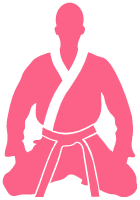The over/under pass, also known as the smash pass or double under pass, is a fundamental Brazilian Jiu-Jitsu technique used to pass an opponent’s guard. This pass involves controlling the legs of your opponent while using pressure to flatten them out and establish a dominant position. In this article, we’ll break down the key details of this essential BJJ technique.
Setting up the over/under pass:
To initiate the over/under pass, start by securing an underhook on one side and an overhook on the other side of your opponent’s body. This will give you control of their upper body and allow you to start working towards their legs.
Controlling your opponent’s legs:
With your hooks established, you’ll want to focus on controlling your opponent’s legs. Use your overhook hand to control their far leg by grabbing onto their ankle, while your underhook hand controls their near leg by grabbing onto their knee.
Flattening out your opponent:
Once you have control of their legs, use your body weight and pressure to drive your opponent down and flatten them out. You can achieve this by walking towards their legs and using your chest and shoulder to compress their upper body.
Establishing dominant position:
As you flatten out your opponent, work to establish a dominant position. This could be full mount, side control, or any other advantageous position that allows you to maintain control and continue your attack.
Maintaining control:
After you’ve passed your opponent’s guard and established a dominant position, it’s important to maintain control. Use your grips on their legs to prevent them from regaining guard, and stay heavy on top to make it difficult for them to escape.
Countering your opponent’s defenses:
While the over/under pass is a powerful technique, your opponent may have defenses in place to counter it. Be prepared to adjust your approach based on your opponent’s reactions, and consider alternative techniques if necessary.
By mastering the over/under pass, you’ll have a powerful tool in your BJJ arsenal for passing your opponent’s guard and establishing dominant positions. Remember to focus on the details and pressure to maximize the effectiveness of this fundamental technique.
Hey there! Just a heads up that some of the links in this post are affiliate links, which means that if you click on them and make a purchase, I may earn a commission. But don’t worry, it won’t cost you anything extra – in fact, you might even get a sweet deal! Plus, every purchase made through one of these links helps support my blog and keep the content coming. So, if you do decide to make a purchase, thank you so much for your support – it means the world to me!
All the best,
Will








Pingback: Open Guard Passing: Essential Techniques for BJJ Fighters – Jiu Jitsu Hub
Pingback: From Beginner to Pro: How to Pass the 3/4 Mount in Jiu Jitsu – Jiu Jitsu Hub